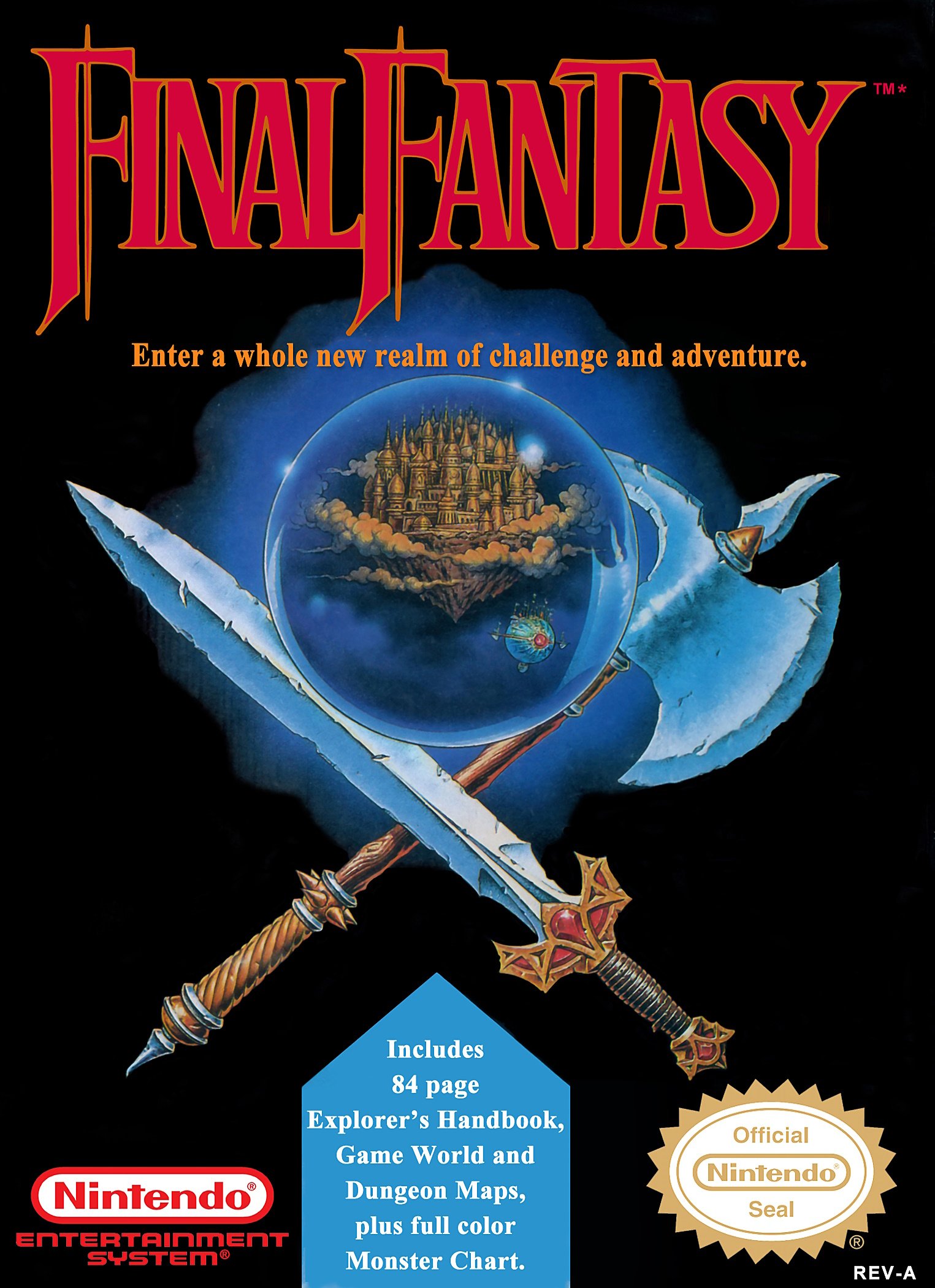
FINAL FANTASY
Final Fantasy on the NES, released in 1987 by Square (now Square Enix), is a seminal title that not only defined a genre but also showcased the artistic potential of 8-bit gaming. As the first installment in the iconic Final Fantasy series, this role-playing game (RPG) combines intricate storytelling with visually engaging design, transforming the NES into a canvas for epic adventure and artistic expression.
At the core of Final Fantasy’s artistic success is its detailed sprite work and evocative character designs. The protagonist, a young warrior, and his diverse party members are depicted with distinct and expressive sprites that convey their unique personalities and abilities. Each character’s animations—whether casting spells, wielding weapons, or interacting with the environment—are fluid and responsive, enhancing the player’s connection to the characters and the unfolding narrative. Enemy sprites, ranging from menacing beasts to mystical sorcerers, are meticulously crafted with unique silhouettes and vibrant colors, making each encounter visually memorable and engaging.
The game’s environments are masterfully designed to reflect the expansive and varied world that players explore. From bustling medieval towns and eerie dungeons to lush forests and desolate wastelands, each area is brought to life with a rich and varied color palette that enhances the immersive experience. The backgrounds are layered with intricate details, such as towering castles, and ancient ruins, and dynamic weather effects like rain and snow, which add depth and atmosphere to every scene. These thoughtfully designed environments not only provide a visually stimulating backdrop but also contribute to the game’s storytelling, guiding players through the protagonist’s journey with visual cues and thematic consistency.
Animation in Final Fantasy is another cornerstone of its artistic achievement. Despite the NES’s technical limitations, the game achieves remarkably smooth and dynamic animations that bring the world to life. Characters move with a sense of purpose and fluidity, while environmental interactions—such as opening doors, pushing objects, and engaging in combat—are depicted with precision and clarity. This level of animation detail enhances the overall immersion, making players feel as though they are part of a living, breathing world.
Visual storytelling is seamlessly integrated into Final Fantasy’s design. Each location and character is crafted with care, ensuring that visual elements convey parts of the narrative without the need for extensive text. Iconic landmarks, symbolic imagery, and character-driven scenes all contribute to a cohesive and engaging story that unfolds through exploration and interaction. The artistic choices in level design and sprite animation work in harmony to create a narrative experience that is both visually and emotionally compelling.
The audio design complements the visual artistry with its memorable and atmospheric soundtrack. Composed by Nobuo Uematsu, the music features a blend of melodic tunes and dramatic scores that enhance the game’s emotional depth and epic scope. Sound effects, from the clash of swords to the ambient noises of bustling towns and eerie dungeons, are intricately tied to the visual actions, creating a harmonious and immersive sensory experience.
Overall, Final Fantasy on the NES exemplifies how artistic vision and technical skill can converge to create a visually stunning and emotionally resonant gaming experience. Its detailed sprite work, rich environments, smooth animations, and cohesive visual storytelling elevate it beyond a standard RPG, making it a beloved classic that continues to inspire and impress players and creators alike. Final Fantasy not only offers engaging and strategic gameplay but also stands as a testament to the artistic craftsmanship of early video games, celebrating the potential of 8-bit artistry to deliver epic and memorable adventures.

